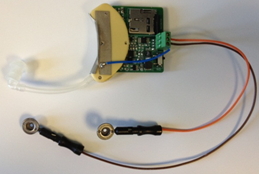A Wearable EEG Monitor for Seizure Detection
- Category: Circuits & Systems, Electronic Devices, Medical Electronics
- Tags: bruno do valle, charles sodini, healthcare
Epilepsy is a common chronic neurological disorder that affects about 1% of the world population [1] . It is characterized by repeated seizures, which are caused by an abnormal neuronal firing rate of the affected brain area. Although EEG has been the chief modality in the diagnosis and treatment of epilepsy for more than half a century, the vast majority of tests are performed in the hospital setting and are of brief duration. Long-term recordings (from days to weeks) can be obtained, but these must occur in the hospital setting. Many patients, however, have intermittent seizures occurring far less often (once a month or even less frequently). Capturing a seizure on EEG is a prerequisite for making a definitive diagnosis, tailoring therapy, or moving toward certain solutions such as surgery. For patients with infrequent seizures, capturing a seizure on EEG might require being in the hospital for over a month, which might not be possible. Thus, there is a need for a wearable long-term outpatient EEG monitor.
Our first prototype consists of 1 EEG channel sampled at 512 Hz with a 12-bit resolution. Figure 1 shows the simplified system block diagram. The data is stored in a micro SDHC flash card similar to the ones found in digital cameras.
The system is housed in a hearing aid package as shown in Figure 2. One electrode is placed near the temporal lobe (close to T3), and the reference is placed on the mastoid.
- Figure 1: Simplified system block diagram.
- Figure 2: System prototype
- W. C. Stacey and B. Litt, “Technology insight: neuroengineering and epilepsy – designing devices for seizure control,” Nature Clinical Practice Neurology, vol. 4, pp. 190-201, Apr 2008. [↩]
